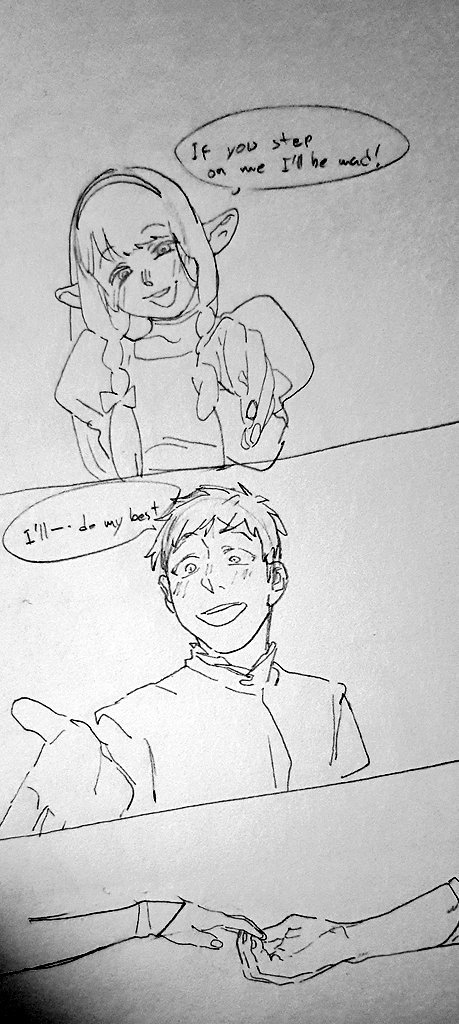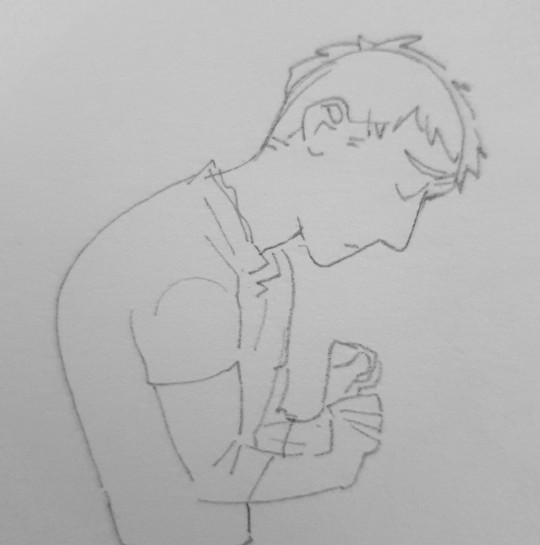#diseases of the heart
Text

Ibn Taymiyyah💛💛💛💛
1 note
·
View note
Text
What is cardiology?
Cardiology is the study of the heart and treatment of the disorders relating to the heart. It is involved with the cardiovascular system (heart, blood, blood vessels). A cardiologist is someone who studies and treats the heart, but does not perform surgery or do major hands-on work with hearts. They often diagnose possible conditions, perform tests, and do less invasive procedures (See below). A cardiac surgeon does surgeries relating to the heart and they are more invasive with opening the chest cavity and working on the heart directly.
Some signs of heart issues that may make you need to see a cardiologist include: shortness of breath, dizziness, chest pains, abnormal heart rhythm or pace, high blood pressure.
Most times, you are going to see a cardiologist first and fully, not interacting with a cardiac surgeon unless you really need surgery from blockages, heart failure, or have heart valve issues. You might see a surgeon once, then return to the care of a cardiologist. A subsection of cardiology are congenital heart doctors who work with heart defects from work, but the usual cardiologist deals with issues as people age and external factors. A cardiac surgeon will monitor you after surgery, then return you back to your cardiologist and you must have a diagnosis from a cardiologist to get surgery.
Parts of the heart
What is the heart?
The heart is a muscular organ that pumps blood through the circulatory system to carry oxygen and nutrients around the body to keep it functioning. It works with your blood vessels as a path of giving blood.
Parts
There are 4 chambers to the heart (sections) that are controlled by electrical impulses (nutrients, neuro signals, and chemical reactions triggering responses in order to keep the muscle pumping). There are also walls, valves, and blood vessels.
Heart walls- they squeeze and relax in order to send blood through your system and there are 3 layers. There is also a wall in the inside of your heart to separate the right and left sides.
Endocardium- inner layer
Myocardium- middle muscular
Epicardium- protective outer
There is also a protective sac that is called the pericardium that covers your heart to keep it safe. It also self lubricates to prevent your heart from rubbing against your other organs and wearing its walls down.
Chambers- they are the internal parts of your heart that are divided into 4 sections to pass blood through successfully.
Right atrium- this is the start where oxygen deprived blood enters your heart through two larger veins. This is the upper right chamber.
Right ventricle- this section pumps the deprived blood to your lungs through your pulmonary artery where your blood is refilled with oxygen. It is the lower right chamber.
Left atrium- this gets the blood from the pulmonary artery, then pumps the fresh blood to your left ventricle. This is the upper left chamber.
Left ventricle- it pumps your blood back into the blood vessels and veins to the rest of your body. It goes to the valves first.
Heart valves- They open and close to let blood in and out of your heart. They are usually on top of your heart or out of sight. You have internal heart valves (Atrioventricular) and external heart valves (Semilunar).
Atrioventricular
Tricuspid- between right atrium and left ventricle
Mitral- left atrium and left ventricle
Semilunar
Aortic- open from the left ventricle and carries blood to the artery that has oxygen rich blood
Pulmonary- carries oxygen deprived blood and opens from the right ventricle
Blood vessels- there are 3 types and they all carry blood through your body
Arteries- carry oxygen rich blood from your heart to your other body parts
Left coronary- divides into 2 branches of artery near your heart
Circumflex artery- supplies blood to the left atrium along with side and back of left ventricle
Left anterior descending artery (LAD)- gives blood to the front and bottom of left ventricle and front of septum.
Right coronary artery- supplies blood to right atrium and ventricle and bottom portion of the left
Veins- carry oxygen poor blood to your heart
Caparillies- tiny and exchange oxygen rich blood and oxygen poor blood
Heart attack vs Cardiac Arrest
Basic definitions
Heart attack: a blocked flow of blood causes the heart to suffocate (clogging, slow)
Cardiac arrest: when the heart malfunctions and stops suddenly (rhythms, electrical impulses, etc.)
Heart attacks in depth
Occurs when an artery is blocked, not allowing oxygen rich blood through and effectively suffocating your heart (and it’s tissues)
Slow and dull
The heart usually does NOT stop beating during a heart attack, but it panics and the rhythm can go wack. It only stops when cardiac arrest happens and the electrical impulses get too weak
You can have many small heart attacks or infarctions, making small parts of your heart tissue to die before a bigger one happens that stops your heart fully
The longer without treatment, the worse the damage
Symptoms (DIFFERENT IN AFAB AND AMAB PEOPLE):
Chest pain (dull, pressure, tightness, squeezing)
Discomfort in shoulders, arms, tummy, chest
Fatigue
Heartburn
Cold sweat
Dizziness
Short of breath
Cardiac arrest in depth
Sudden and no warnings
Caused by electrical malfunctions in your muscles that disrupts the rhythm of your heart pumping
It makes the person go unconscious and makes the heart still entirely, just collecting blood, but not pumping it to the lungs and slowly suffocating the whole body
This happens a lot AFTER heart attack recovery and heart attacks increase this risk
Other diseases and terms
Heart disease- any disease or condition relating specifically to the heart
Cardiovascular disease- conditions affecting the heart and blood vessels
Atrial fibrillation (afib)- irregular impulses to your atrium (improper rhythm)
Arrhythmia- any heartbeat that is irregular, no consistency, too fast or too slow
Cardiomyopathy- unusual stiffness or thickening in the heart muscle
Congestive heart failure- when the heart muscle is too weak or stiff to pump blood
Coronary heart disease- plaque build up in the narrow arteries (clogged arteries)
Often leads to infarctions or heart attacks
Pericarditis- inflammation in your heart’s lining
Surgeries relating to the heart
Less invasive (can be done by a cardiologist)
Angioplasty- this opens clogged arteries by using a balloon like tool to widen the space
This is often combined with heart stenting that uses a tiny mesh tool to KEEP the space open with medications as well. This just widens the space, but does not remove the plaque like a surgeon would do
This is used during heart attacks to allow blood flow and to decrease the amount of damage down
Inserting a pacemaker- this is when a device is inserted into your chest and connects to your heart through wires to control your heartbeat or rhythm.
Single chamber- carries electrical impulses to the right ventricle
Dual chamber- carries electrical impulses to right atrium and right ventricle to control the timing of contractions
Biventricular- carries and controls electrical impulses to the left and right ventricles of the heart
Heart catheterizations- when a small, flexible tube is guided through blood vessels to diagnose or treat conditions. It is basically used as a look inside tool.
X Rays and other scanners- to look inside the chest without opening it. This is for the heart, lungs, and bones.
Ambulatory monitors- they are monitors that the patient can take home and is used to track arrhythmias outside of medical settings.
Stress tests- these are used in medical settings to see how your heart reacts when it works the hardest. You are taken vitals before, during, and after the “stress” period (running on a treadmill for example)
These are often for heart disease or coronary issues
EKG- taking vitals over your heart to track its beats and can show if you’ve had a heart attack and keeps things monitored.
More invasive (done by cardiac surgeons)
Coronary artery blockage removal- this is when your arteries are so clogged up with plaque that it prevents blood from flowing through effectively. This often leads to heart attacks and this surgery is often done when a heart attack or high risk is detected.
Heart valve issues: the surgeon can go in and work on your heart values/your chambers in order to make sure the blood flows in the right direction and your heart still works. This is either repairing or replacing.
Stenosis- when the valve flaps become stiff and possibly fuse together. This reduces blood flow as the passage is narrow
Prolapse- makes the blood flow backwards
Aortic aneurysm- the weakening of the aorta to the point it bursts and stops the blood flow entirely as the blood spreads to the rest of the body in not needed areas.
Abdominal- when it ruptures below the chest and it caused by hardened arteries
Thoracic- in the chest and caused by high blood pressure or injury
Some heart failure related issues, but that is discussed with a cardiologist first.
#heart attack#cardiac arrest#cardiac disease#cardiac surgery#hyperfixation#im hyperfixating again#we hyperfixating#hyperfixating? kinda check. i don't like using specific neurodivergency terms w/o a diagnosis but i sure do obsess with things completely#im hyperfixating so hard rn#help girl im hyperfixating#hyperfixiating#heart#heartcore#heart disease#mad science#cardiology#cardiophilia?#heartache#diseases of the heart#heart monitor#cardiologist#cardiac surgeon#recovery#research#my research#sciencecore#coronary#artery#anatomy#tw anatomical heart
1 note
·
View note
Text
wilson: almost solves house’s moby dick case
house: undresses him with his eyes

#mr hugh laurie why are you looking at this man like youre about to fuck his brain out#or confess your undying love to him while kissing him gently#the way to a mans heart is through kawasakis disease#house md#bay rambles#malpractice md#hilson#gregory house#james wilson#bay house posting
2K notes
·
View notes
Text
#jam#1k#curious bc i feel like the most american thing abt me is how much i enjoy cheeseburgers#i've had a burger and a rootbeer for dinner every day this week#ik i'm probably giving myself heart disease but it's worth it
4K notes
·
View notes
Text
"In a highly-anticipated world-first, the Texas Heart Institute has successfully implanted an artificial titanium heart that uses the same technology as bullet trains to pump blood mechanically throughout the body.
Called the Total Artificial Heart (TAH), the feat is seen as a major step in keeping people alive for longer and longer periods while they wait for heart transplants.
Texas Heart partnered with the medical tech company BiVACOR to create the TAH. It’s a titanium-constructed biventricular rotary blood pump with a single moving part that utilizes a magnetically levitated rotor that pumps the blood and replaces both ventricles of a failing heart.
The benefit of using magnetic levitation is that none of the moving parts ever scrape or slide against each other, reducing friction, and dramatically increasing the longevity of the device. But what’s really cool is the TAH can pump blood at a rate of 12 liters per minute, enough to allow an adult male to engage in exercise.
The first-in-human clinical study, overseen closely by the FDA, aims to evaluate the safety and performance of the BiVACOR TAH as a bridge-to-transplant solution for patients with severe bi or univentricular heart failure. Following this first implantation completed at Baylor St. Luke’s Medical Center in the Texas Medical Center, four additional patients are to be enrolled in the study.
“The Texas Heart Institute is enthused about the groundbreaking first implantation of BiVACOR’s TAH. With heart failure remaining a leading cause of mortality globally, the BiVACOR TAH offers a beacon of hope for countless patients awaiting a heart transplant,” said Dr. Joseph Rogers, President and Chief Executive Officer of The Texas Heart Institute and National Principal Investigator on the research.
“We are proud to be at the forefront of this medical breakthrough, working alongside the dedicated teams at BiVACOR, Baylor College of Medicine, and Baylor St. Luke’s Medical Center to transform the future of heart failure therapy for this vulnerable population.”
Heart failure is a global epidemic affecting at least 26 million people worldwide, 6.2 million adults in the US, and is increasing in prevalence. Heart transplantations are reserved for those with severe heart failure and are limited to fewer than 6,000 procedures per year globally. Consequently, the US National Institutes of Health estimated that up to 100,000 patients could immediately benefit from mechanical alternatives.
The successful implantation of BiVACOR’s TAH highlights the potential of innovative technologies to address critical challenges in cardiac care, such as long transplantation waitlists.
“This achievement would not have been possible without the courage of our first patient and their family, the dedication of our team, and our expert collaborators at The Texas Heart Institute,” said Daniel Timms, founder and CTO of BiVACOR."
youtube
-Article via Good News Network, August 1, 2024. Video via 7News Australia, July 26, 2024.
#heart transplant#organ transplant#medical news#public health#organ donation#heart disease#titanium#texas#australia#cyborg#mechanical#transhumanism#the future is now#like for real apparently#good news#hope#Youtube
567 notes
·
View notes
Text
Barbara O'Neill explains heart disease, heart health, dangers of cholesterol lowering medications, lipitor thief of memory, margarin is toxic, fat free diets are harmful. 🤔
#pay attention#educate yourselves#educate yourself#knowledge is power#reeducate yourself#reeducate yourselves#think for yourselves#think about it#think for yourself#do your homework#do some research#do your own research#ask yourself questions#question everything#heart disease#for your health#healing#health tips#healthy food
775 notes
·
View notes
Text

Stay awake don't fall asleep
#fanart#genshin impact#arlecchino#clervie#nafarts#arlecchino being a tiny baby weirdgirl(tm) with pet spiders that they had funerals for#u don't understand how much that makes my heart do a squeeze#and then doomed goth/prep yuri on top of that#like wtf!!!!!!!!!!!#i'm diseased
365 notes
·
View notes
Text
melini's first ball



and laios freaking it sensitive style

#little lacille comic#i thought about this while walking home trying not to laugh out loud at the freaking it sensitive style post#i had to let it out now bc side order is coming out tonight and im locking it#anyway this is ugly and cheesy and comes from the depths of my diseased mind and heart. enjoy
309 notes
·
View notes
Text

i've been wanting to show off my crown prince design since november of last year lmao / follow for more xianle epic fail compilations
#i started drawing taizi dianxia and this meme popped into my head#the second panel is based off of the time the trio spent in the quarantine zone before xianle fell#when xl was trying to figure out the cure for the human face disease and bringing rain to yong’an#lemme find my favorite quotes from this book#its either#Your Highness#why do you think you can achieve anything you want to do? Rather than putting my fate in your hands#I choose to put it in my own.#… Throughout all their past meetings#this was the very first time Xie Lian had steeled his heart to kill Lang Ying.#orrrr#You don’t have a third path amd there is no second cup of water. Wake up#Your Highness! You’re running out of time.#tgcf#heaven official’s blessing#tian guan ci fu#tgcf meme#xie lian#hob#lmao#art#digital art#my art#doodle#tgcf spoilers#blood
1K notes
·
View notes
Text
Your hand holding my breast and your head on my chest...
You listen to every heartbeat while watching my breast bouncing in your hand...
You feel how my heart begins to beat stronger and my breathing accelerates...
With your free arm you surround my back and press my chest against your ear.
The stimulant and the pressure on my heart take effect and my heartbeat becomes faster and erratic...
Your hand presses on my left breast and your head in the center...
I can barely hold my breath... Tachy runs and slamming random heartbeats and then I feel like my heart is losing control..
Your head bouncing on my chest and my heart can't keep up and shakes against my ribs...
I can feel my heart squeezing I can hear the blood pumping through my veins so fast it hurts...
One last squeeze with both hands as you rise and place just your ear gently on my breast and listen attentively as my heart reacts
You release the pressure from your arms and my heartbeat is now a strong and painfull slap as it returns to normal...
I can feel every contraction of my heart muscle and you can hear it push the blood...
After a while it recovers its rhythm but it becomes too sensitive and a single touch agitates it...
You can continue playing with it for a while.
#fast heartbeat#irregular heartbeat#female heartbeat#cardiophilia#cardiophile#heart attack#heart disease#heartache#Make heartbeat#heart pounding#pounding heart#chest pounding#my heart is pounding#my heartbeat#feel my heart#my heart huuuurts#tachycardia#tachycardiac#arritmia#heart hammering#heart torture#dark cardiophilia#cardiac arrhythmia#cardiac arrest#Slamming heart#Fluttering heart#pressure#Pressed heart#Visible heartbeat#heart kink
102 notes
·
View notes
Text

low effort heart doodle but I think it’s really funny. inspired by this picture of squidward

#cccc#chonny jash#heart chonny jash#heart cj#art#he probably coughs like he has 15 diseases and some kind of plague#boowomp
169 notes
·
View notes
Text
So folks are harassing Ilymation for... -checks notes- calling out an anti-woke commentary YTber for harassment and talking about diet culture...?
#sure because it's not because she's a ND queer Jewish YTber#it's because “she's promoting heart disease to children” /sarcasm#illymation
253 notes
·
View notes
Text
Ya know, I can understand that some people who are disabled want to keep working. They don't want to apply for SSI or SSDI. And that's fine. More power to them.
What bothers me though is when they say things like "I don't want to live off the system" in a very derogatory manner.
Some of us can't work. And SSI and SSDI don't really give us enough to live on. So we need food stamps. Some of us rely on subsidized housing. We struggle to get through each month. And we don't need people being derogatory to us because of our disabilities. We don't need people acting like we're "less than" because of our disabilities. And we especially don't need this coming from other disabled people.
#disabled#disabilty#ssi#ssdi#food stamps#housing#wheelchair#chronic illness#chronic pain#fibromyalgia#heart disease#chronic degenerative disc disease#mental health
1K notes
·
View notes
Text

Statistics don't lie It just blows my mind that people can't see or understand that COVID is a dangerous virus that can damage your body. Getting infected multiple times will have serious consequences for many.
#covid#sars cov 2#long covid#heart issues#heart damage#diabetes#cancer#alzheimers#pulmonary embolism#atrial fibrillation#cardiovascular disease#hypertensive heart disease
251 notes
·
View notes
Text
'Scape the last Goat and Lamb the last Sheep

#cotl#cult of the lamb#ramblings from a den dweller#cotl lamb#cotl goat#cotl fanart#not me trying to design my lamb for the millionth time now#ngl though I really like this attempt#'Scape is wearing the diseased heart fleece cause I thought it looked closest to the trailer#I think it is the same as the trailer one minus the emblem being replaced by a bell#(also I gave the emblem horns bc yes)#anyways hope you like my designs
91 notes
·
View notes
Text

GIF by literatigifs
Obsessed with the way Jess licks his lips after saying this.
#the things you never noticed until you saw a gif of it#i felt compelled to share with all of you#my lovely moots who share my disease#jess mariano#king of my heart#why is he so attractive though
84 notes
·
View notes